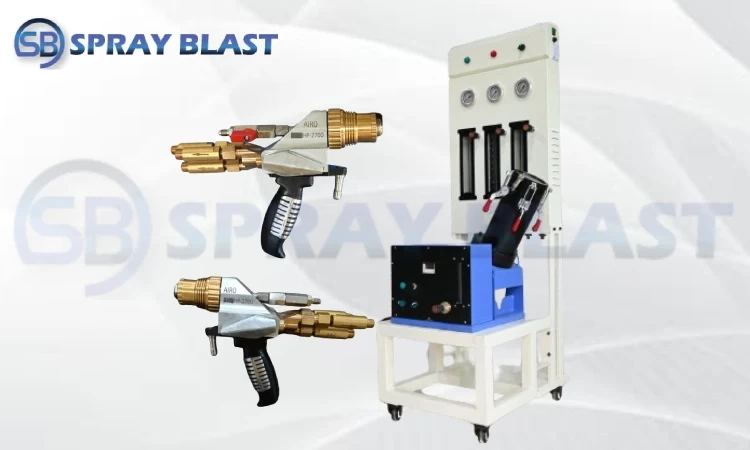
The High Velocity Oxygen Fuel Coating (HVOF) process is one of the considerable famous thermal spray technologies & HVOF Spray Coating has been engaged in considerable industries as a consequence of its flexibility & superior grade of coatings made correspond to further thermal spray procedures. HVOF Gun produces a coating of more increased adhesive resilience also more elevated hardness together with more inferior porosity than additional thermal spray processes such as the plasma spray. Reported growth of utilization of the HVOF spray coating process in different industries, mainly in Aeronautical industry, both in the commercial & defense airline enclosures. Other fields of application of the High Velocity Oxygen Fuel Coating process include petrochemical, automotive, paper/pulp, & manufacturing industries.
High Velocity Oxygen Fuel coating Gun consists of a combustion chamber & a nozzle with connecting orifices and a tube that allows injection of powder into the nozzle. Carefully metered oxygen & fuel gas are presented into the explosion compartment. The fuel gas is usually propane, propylene, or hydrogen, although different hydrocarbons can be engaged. Continuous combustion of the oxygen & fuel gas materializes in combustion partition & the resulting burning, high pressure gas is qualified to boost & accelerate via orifices into the nozzle. A carefully estimated flow of powder is familiarized axially into the nozzle, permitting satisfactory heating & acceleration of the powder bits. The powder is warmed & revved by the consequences of the combustion, usually to temperatures further its melting point & to velocities hovering or occasionally overextending 1800 ft/sec (550m/sec).
For More details about thermal spray gun visits our website.
HVOF thermal spray process has the possibility to form free-standing ingredients. However, deposit viscosity was quite quiet, typically 0.6 mm in the case of WCCo deposits. This is because cracking, deformation, & adhesion loss of elements/coatings results as thickness improves due to residual stress build-up. Dissimilar material properties, especially the dissimilarity of the coefficient of thermal growth between the substrate & coating also between different layers of the coating (if different layers consist of various materials) are the main cause of residual stress build-up. Graded deposition is one method of potentially reducing internal stress, as it promotes incremental variation of through-thickness coating composition and/or properties. This analysis examines possibility of assembling aluminum/tool-steel useful graded coatings utilizing the HVOF thermal spray coating process. Graded aluminum/tool-steel coated aluminum may be engaged in the Automobile industry to replace heavy parts with lighter parts, which in kindness reduce vehicle weight, increase fuel efficiency & make parts stronger by reducing residual stress build-up in them.
Unlike further flame spraying processes, the HVOF or High Velocity Oxygen Fuel process engages simply powder as the coating material instead than wire or rod. There are two classes of HVOF processes;
(1) Detonation Gun HVOF system
(2) Continuous combustion HVOF system.
The difference between each of these approaches is usage of distinguishable fuel gases, cooling systems, & the fact that penultimate discharge is maintained by a timed spark, engaged to detonate particle & gas mixture, but otherwise their underlying principle is same. There are notable dissimilarities between the detonation gun & the Continuous combustion HVOF gun designs, however this report concentrates on the latter process only.
For more information about thermal spray booth visits our website.
The properties of High Velocity Oxygen Fuel coatings are positively conditional on a number of parameters including the rehearsal of the element surface, composition, morphology, size disbandment, & spread rate of powder, & the specific control of gas flows, comparable torch/part movement, stand-off angle of deposition & part temperature. Moreover, since powder bits are being warmed & revved in a stream of combustion products, surrounding atmosphere may be either oxidizing or carburizing. In addition, air may be inspirated into the gas stream as it exits the nozzle, leading to oxidation of powder. The degree to which these gas-powder reactions occur depends, of course, on the specific device, operating parameters, and the material being deposited.